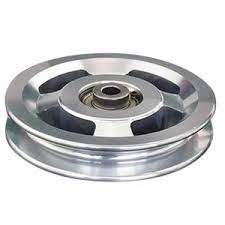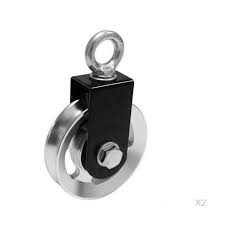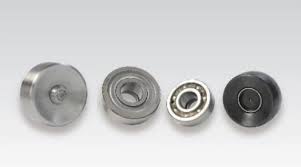Product Description
Machine Part Customized CNC Milling Parts Black Small Block Plastic Metal Double Groove Pulley Set Accessories Aluminum Pulley
Basic Information :
| Tolerance | 0.02~0.1mm. |
| Materials | Low, middle,high carbon steel / spring steel / Stainless steel 201, 301, 304, 316 / Aluminum / Brass / Bronze / Copper / Titanium / Plastic (PP, Nylon, PVC, APET) Brass or ABS,POM Ect And Customized raw material. |
| Surface Finish | Heat treatment / Polishing,Electronic Polishing / (Zinc, nickel, chrome, tin, brass, glod, silver, titanium) Plating / Electrophoresis / Black Oxide / Hot-dip galvanizing / Powder Coating / Paint Coating / Blasting / Shot Blasting / Bead Basting / Anodizing / Phosphating / PAD Printing / Laser etching / Dacromet Coating / Enamel. |
| Payment terms | Trade Assurance TT,paypal,Western Union,alipay,L/C. |
| Packing Detail |
Inner Packing: PE bag / EPE Foam Packing / Anti-Rust Paper Packing / Blister / SMT / Vacuum Packing / Plastic Box Packing / Color Box Packing. Outter Packing: Stretch Film Packing / Carton / Pallet / Wood Case. |
Our Advantage
-
Provide OEM/ODM service and assembling service, since 2000.
- One-stop purchasing service :Stamping part, CNC lathe part, CNC milling part, Springs, Shafts, fastener etc.
- The 2ndtier supplier of , factory audits passed.
- Product certification: RoHS, HE, vailable.
- Management certification: ISO/9001: 2015 and IATF16949 Passed.
/* January 22, 2571 19:08:37 */!function(){function s(e,r){var a,o={};try{e&&e.split(“,”).forEach(function(e,t){e&&(a=e.match(/(.*?):(.*)$/))&&1
| After-sales Service: | Custom Service |
|---|---|
| Warranty: | Custom Service |
| Condition: | New |
| Certification: | ISO9001 |
| Customized: | Customized |
| Material: | Stainless Steel |
| Samples: |
US$ 50/Piece
1 Piece(Min.Order) | |
|---|
| Customization: |
Available
| Customized Request |
|---|

How do spinning pulleys impact the performance of fitness and exercise equipment?
Spinning pulleys play a significant role in enhancing the performance of fitness and exercise equipment. They contribute to the smooth operation, functionality, and effectiveness of various exercise machines. Here’s how spinning pulleys impact the performance of fitness and exercise equipment:
1. Resistance Adjustment:
In many fitness and exercise equipment, spinning pulleys are utilized to adjust the level of resistance. By incorporating pulleys of different sizes or changing the position of the pulley along the cable or resistance mechanism, users can modify the intensity of their workouts. This allows individuals to tailor their exercise routines to their fitness levels, goals, and preferences.
2. Smooth and Controlled Movement:
Spinning pulleys, combined with cables or belts, enable smooth and controlled movement in fitness equipment. They provide a stable and consistent motion, ensuring that users can perform exercises with proper form and technique. The smooth movement facilitated by spinning pulleys minimizes the risk of jerky or jarring motions, reducing the likelihood of injuries.
3. Multiple Exercise Options:
Fitness equipment often incorporates spinning pulleys to offer a wide range of exercise options. By utilizing pulleys with different cable attachment points and adjusting the cable paths, equipment manufacturers can provide users with versatile workout possibilities. Spinning pulleys enable exercises targeting different muscle groups, allowing users to perform various strength training or conditioning movements.
4. Cable and Handle Adjustments:
Spinning pulleys are instrumental in adjusting the length and position of cables or handles in fitness equipment. This adjustability allows users of different heights, body sizes, or exercise preferences to find the most comfortable and biomechanically suitable settings. Users can modify the range of motion and exercise angles to optimize their workouts.
5. Functional Training and Weight Stacks:
In weight training machines, spinning pulleys are used in conjunction with weight stacks to provide resistance. The weight stacks are connected to the pulleys, and the user pulls or pushes against the resistance. Spinning pulleys ensure smooth and even distribution of the weight load, enhancing the user’s ability to perform functional movements and isolate specific muscle groups.
6. Durability and Reliability:
High-quality spinning pulleys are crucial for the durability and reliability of fitness and exercise equipment. Pulleys designed to withstand the repetitive stresses and forces exerted during workouts ensure long-term performance and minimize the risk of component failures. Reliable spinning pulleys contribute to the overall safety and longevity of the equipment.
7. Maintenance Considerations:
Regular maintenance procedures, such as inspecting pulley systems, lubricating pulley bearings, and ensuring proper belt tension, are necessary to maintain the performance and functionality of fitness equipment with spinning pulleys. These maintenance practices help prevent premature wear, ensure smooth operation, and extend the lifespan of the equipment.
In summary, spinning pulleys significantly impact the performance of fitness and exercise equipment by enabling resistance adjustment, providing smooth and controlled movement, offering multiple exercise options, allowing cable and handle adjustments, facilitating functional training with weight stacks, ensuring durability and reliability, and requiring proper maintenance. These pulleys enhance the overall user experience, promote effective workouts, and contribute to achieving fitness goals in a safe and efficient manner.

How do spinning pulleys enhance the precision and efficiency of machinery and equipment?
Spinning pulleys play a crucial role in enhancing the precision and efficiency of machinery and equipment. Here’s a detailed explanation of how spinning pulleys contribute to these improvements:
1. Mechanical Advantage:
Spinning pulleys enable the creation of mechanical advantage in various mechanical systems. By using different-sized pulleys and adjusting the number of times the rope or belt wraps around them, the force required to perform a specific task can be amplified or reduced. This allows machinery and equipment to perform tasks with greater precision and efficiency by optimizing the force applied to the system.
2. Power Transmission:
Spinning pulleys are commonly used in power transmission systems. By connecting multiple pulleys with ropes or belts, they facilitate the transfer of mechanical power from one component to another. This enables efficient power distribution and ensures that machinery and equipment operate at their maximum efficiency. Spinning pulleys help minimize power losses and enable the precise transmission of power to different parts of the system.
3. Speed Control:
Spinning pulleys provide speed control capabilities in machinery and equipment. By using pulleys of different sizes, the rotational speed can be adjusted. This is achieved by changing the ratio of the pulley diameters, which alters the speed at which the rope or belt travels around the pulleys. Speed control allows for precise control over the movement and operation of machinery, ensuring that tasks are performed efficiently and accurately.
4. Directional Control:
Spinning pulleys are instrumental in changing the direction of force within mechanical systems. By routing a rope or belt through the pulleys, the force can be redirected to different components or locations. This ability to change the direction of force enhances the precision and efficiency of machinery and equipment by allowing for flexible and precise control over the movement and positioning of various parts.
5. Tensioning and Control:
Spinning pulleys are used to control the tension in ropes or belts within machinery and equipment. Proper tensioning is crucial for maintaining optimal performance and preventing slippage. By adjusting the position and angle of spinning pulleys, the tension in the rope or belt can be controlled, ensuring smooth and efficient operation. This contributes to the overall precision and efficiency of the machinery or equipment.
6. Load Distribution:
In applications where heavy loads need to be moved or supported, spinning pulleys are used to distribute the load evenly across multiple pulleys and ropes or belts. This prevents excessive stress on specific components and ensures smooth and efficient operation. Load distribution provided by spinning pulleys enhances the precision and longevity of machinery and equipment, as it minimizes wear and tear on individual parts.
By leveraging the mechanical advantages, power transmission capabilities, speed control, directional control, tensioning and control features, as well as load distribution properties of spinning pulleys, machinery and equipment can achieve higher levels of precision and efficiency in various industries and applications.

Can you explain the key components and design features of a spinning pulley?
A spinning pulley consists of several key components and design features that allow it to function effectively in mechanical systems. Here’s a detailed explanation of these components and features:
1. Hub:
The hub is the central part of the spinning pulley. It is typically a solid cylindrical structure that provides support and stability to the pulley. The hub is mounted on a shaft or axle, allowing the pulley to rotate freely.
2. Rim or Groove:
The rim or groove is the outer edge of the spinning pulley. It is specifically designed to accommodate a rope, belt, or cable. The rim is usually rounded or flat, depending on the application. Its primary function is to guide and retain the rope or belt during operation, preventing slippage and ensuring efficient power transmission.
3. Diameter:
The diameter of a spinning pulley refers to the distance across its outer rim. It plays a crucial role in determining the speed and mechanical advantage of the pulley system. Larger diameters result in increased speed but reduced mechanical advantage, while smaller diameters provide higher mechanical advantage at the expense of speed.
4. Material:
Spinning pulleys are typically made from durable materials such as metal, plastic, or composite materials. The choice of material depends on factors such as the load capacity, environment, and specific application requirements. Metal pulleys, such as steel or aluminum, are commonly used in heavy-duty applications, while plastic or composite pulleys are preferred in lighter-duty or corrosive environments.
5. Bearings:
Bearings are essential components in spinning pulleys as they enable smooth rotation. They reduce friction between the rotating hub and the shaft, allowing the pulley to spin with minimal resistance. Common types of bearings used in spinning pulleys include ball bearings and roller bearings.
6. Mounting Mechanism:
Spinning pulleys are typically mounted on a shaft or axle, which allows them to rotate freely. The mounting mechanism may involve set screws, keyways, or other fastening methods to secure the pulley to the shaft. The design of the mounting mechanism should ensure proper alignment and prevent slippage during operation.
7. Flanges:
Some spinning pulleys feature flanges on either side of the rim. Flanges are raised edges or rims that help keep the rope or belt aligned and prevent it from slipping off the pulley during operation. Flanges provide additional guidance and stability, particularly when the pulley is subjected to lateral forces or when the rope or belt is under tension.
8. Tensioning Mechanism:
In certain applications, spinning pulleys may include a tensioning mechanism. This mechanism allows for the adjustment of tension in the rope or belt, ensuring optimal performance and preventing slippage. Tensioning mechanisms can involve springs, levers, or other devices that allow for easy adjustment and maintenance of tension.
These are the key components and design features of a spinning pulley. The combination of these elements enables the pulley to effectively transmit power, change the direction of force, and create mechanical advantage in various mechanical systems.


editor by CX
2024-04-23